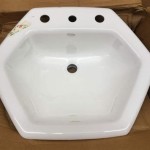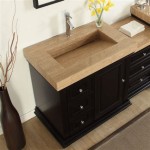Can You Use Vinyl In Bathrooms? A Comprehensive Guide
Vinyl flooring has become a popular choice for various areas of the home, praised for its durability, water resistance, and relatively low cost. However, when considering flooring options for a bathroom, specific requirements come into play due to the high humidity and potential for water exposure. This article explores the suitability of vinyl flooring for bathrooms, examining its benefits, potential drawbacks, different types of vinyl, and essential installation considerations.
The bathroom environment presents unique challenges to flooring materials. High humidity levels, frequent water splashes from showers and sinks, and the potential for leaks necessitate a waterproof and durable surface. Materials prone to water damage, such as natural wood, can warp, rot, or develop mold and mildew in such conditions. Therefore, selecting a flooring option that can withstand these conditions is crucial for a long-lasting and hygienic bathroom.
Water Resistance and Waterproofing Capabilities of Vinyl
A primary reason vinyl flooring is considered for bathrooms is its inherent water resistance. Unlike some other flooring options, vinyl is manufactured with a water-resistant or waterproof core, depending on the specific type. This characteristic prevents water from penetrating the flooring and damaging the subfloor beneath. This is particularly important in bathrooms where spills and leaks are common occurrences.
Sheet vinyl, in particular, offers exceptional water resistance due to its seamless installation. With minimal seams, there are fewer entry points for water to seep through. This makes sheet vinyl an excellent choice for bathrooms prone to significant water exposure. However, it is important to note that even with sheet vinyl, proper installation and sealing around fixtures are essential to maintain waterproof integrity.
Luxury Vinyl Tile (LVT) and Luxury Vinyl Plank (LVP) offer a more modular approach to vinyl flooring. While LVT and LVP are water-resistant, the seams between individual tiles or planks can potentially allow water penetration if not properly installed and sealed. Products marketed as "waterproof" often have a tighter locking mechanism and a more robust core that contributes to complete water impermeability. It's crucial to review the manufacturer's specifications regarding water resistance and waterproofing for any LVT or LVP product being considered for bathroom use.
Types of Vinyl Flooring Suitable for Bathrooms
Several types of vinyl flooring are available, each with its own characteristics and suitability for bathroom environments. Understanding the differences between these types is essential for making an informed decision.
Sheet vinyl is a continuous, rolled material that is installed in a single sheet, minimizing seams. This makes it highly water resistant and ideal for bathrooms. Sheet vinyl typically comes in widths that can cover the entire bathroom floor without any seams, though in larger bathrooms, seams may be necessary. In these cases, professional heat welding of the seams is essential to ensure a waterproof seal.
Luxury Vinyl Tile (LVT) replicates the look of ceramic or stone tile. It comes in individual tiles that are installed piece by piece. LVT is generally water-resistant, but its grout lines can be vulnerable to water penetration unless properly sealed. Certain LVT products are specifically designed with a waterproof core and a tight locking mechanism to prevent water from seeping through the seams.
Luxury Vinyl Plank (LVP) mimics the appearance of hardwood flooring. It comes in planks that are installed similarly to LVT. Like LVT, LVP is generally water-resistant, but its seams require proper sealing to prevent water damage. Waterproof LVP options are also available, featuring enhanced core materials and locking systems designed to completely prevent water penetration.
Peel-and-stick vinyl tiles are a more budget-friendly option but are generally not recommended for bathrooms due to their lower water resistance and less secure adhesion. The adhesive used in peel-and-stick tiles can degrade over time with exposure to moisture, leading to tiles lifting or shifting. This can create entry points for water and compromise the integrity of the flooring.
Installation Considerations for Bathroom Vinyl Flooring
Proper installation is critical for ensuring the longevity and performance of vinyl flooring in a bathroom. Even with water-resistant or waterproof vinyl, improper installation can lead to water damage and premature failure. Several key considerations should be taken into account during the installation process.
Subfloor preparation is essential. The subfloor must be clean, dry, and level before installing any type of vinyl flooring. Any imperfections in the subfloor, such as cracks, holes, or unevenness, can affect the appearance and performance of the vinyl. Moisture testing of the subfloor is also crucial to ensure that there are no existing moisture problems that could compromise the flooring. If the subfloor is uneven, self-leveling compound can be used to create a smooth and level surface.
Sealing is paramount, especially around toilets, showers, and bathtubs. These areas are prone to water exposure, and a waterproof sealant, such as silicone caulk, should be applied to all seams and edges to prevent water from seeping underneath the flooring. Regular inspection and reapplication of sealant may be necessary to maintain its effectiveness over time.
Acclimation is important for LVT and LVP. Allowing the vinyl planks or tiles to acclimate to the bathroom's temperature and humidity for at least 48 hours before installation can help prevent expansion and contraction issues after installation. This is particularly important in bathrooms with fluctuating temperatures and humidity levels.
Professional installation is often recommended, especially for sheet vinyl. Installing sheet vinyl requires specialized tools and expertise to ensure a seamless and waterproof installation. Improper installation can lead to wrinkles, bubbles, and seam failures, compromising the flooring's integrity. While LVT and LVP can be installed as a DIY project, professional installation is still recommended for optimal results and warranty coverage.
While vinyl is water resistant, it is still important to maintain the flooring properly. Regular cleaning with a mild detergent and water is recommended to remove dirt and debris. Avoid using harsh chemicals or abrasive cleaners, as these can damage the vinyl surface. Promptly wipe up any spills or standing water to prevent them from seeping into the seams or edges of the flooring.
In conclusion, vinyl flooring can be a suitable choice for bathrooms, provided that certain conditions are met. The type of vinyl selected must be water-resistant or waterproof, and proper installation and maintenance are essential for ensuring long-term performance. Understanding the nuances of different vinyl types and adhering to best practices during installation can help create a durable, attractive, and water-resistant bathroom floor.

Vinyl Planks In Bathrooms Residential Inspiration Flooring

Dos And Don Ts For Installing Vinyl Plank Floors In The Bathroom Advice Homeowners

Can You Renovate Bathrooms With Vinyl Flooring Imagine Floors

Luxury Vinyl Flooring Is A Great Choice For Chic Bathrooms

Best Vinyl Flooring For Bathrooms

What Is The Best Flooring For Bathrooms Tarkett

How To Install Vinyl Plank Flooring In A Bathroom Fixthisbuildthat

Luxury Vinyl Tile Floors For A Bathroom The Ultimate Guide

Best Bathroom Flooring Options

Installing Vinyl Plank Flooring Lifeproof Waterproof Rigid Core Sustain My Craft Habit







